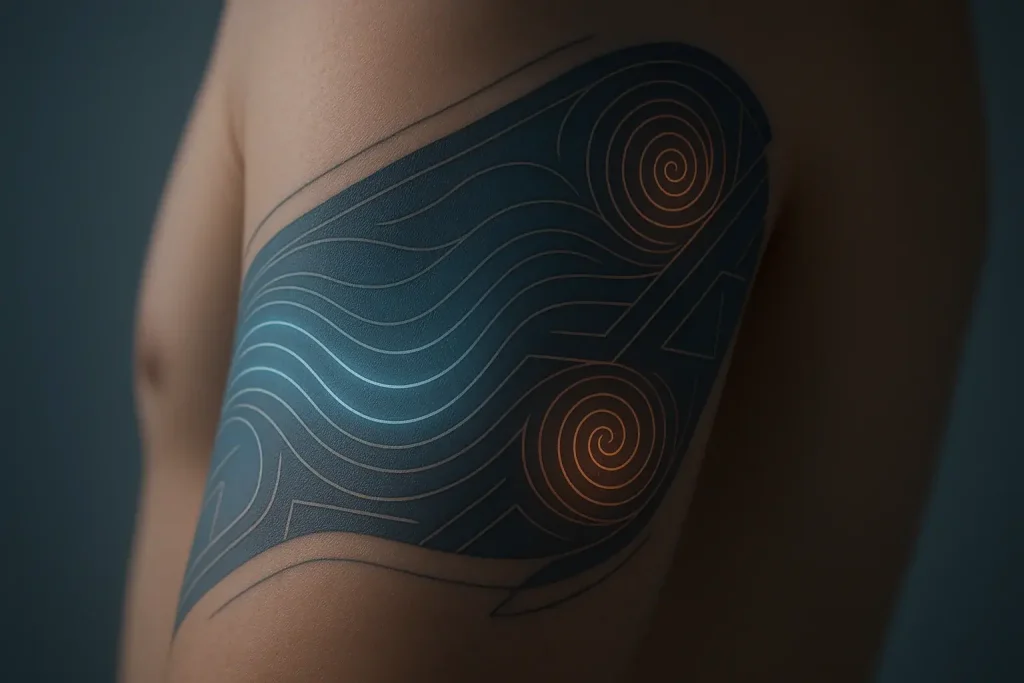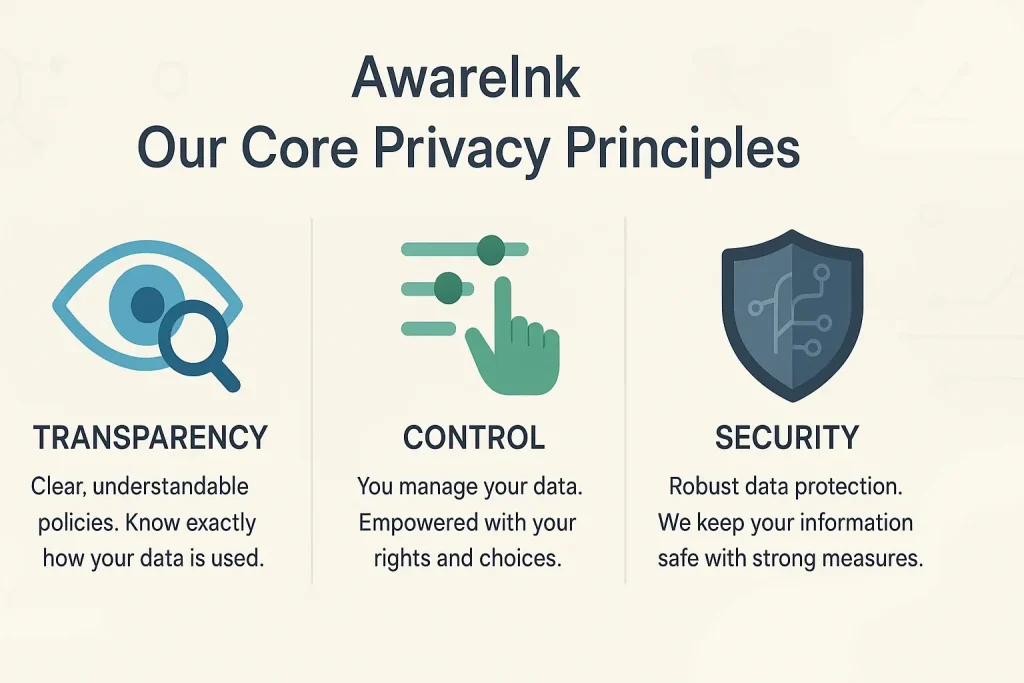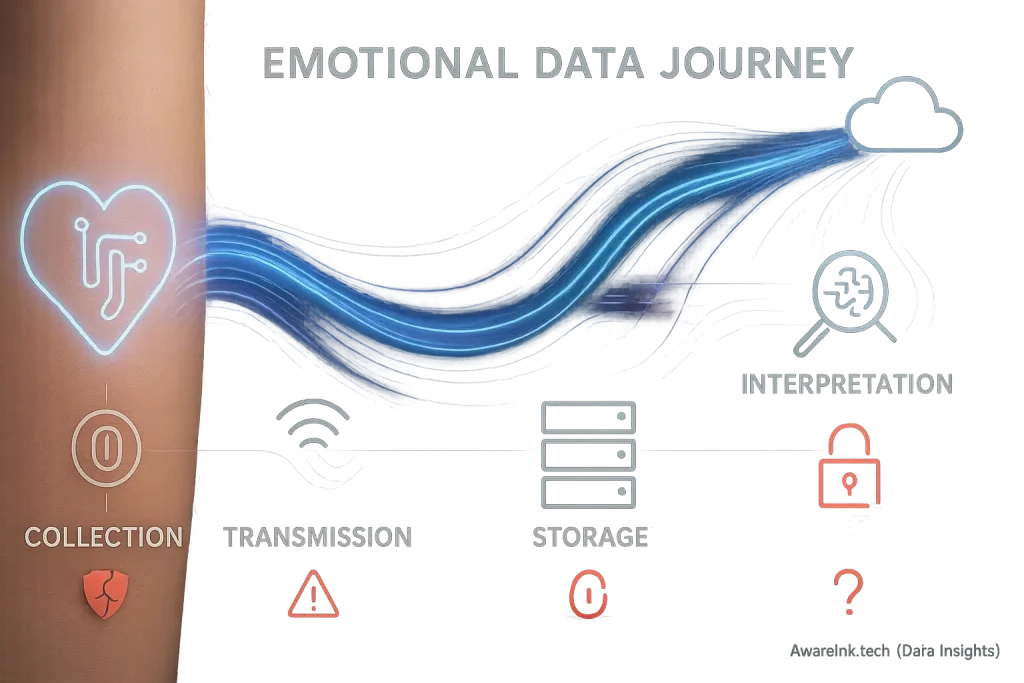Unveiling Tech Tats: A Glimpse into Chaotic Moon's Vision
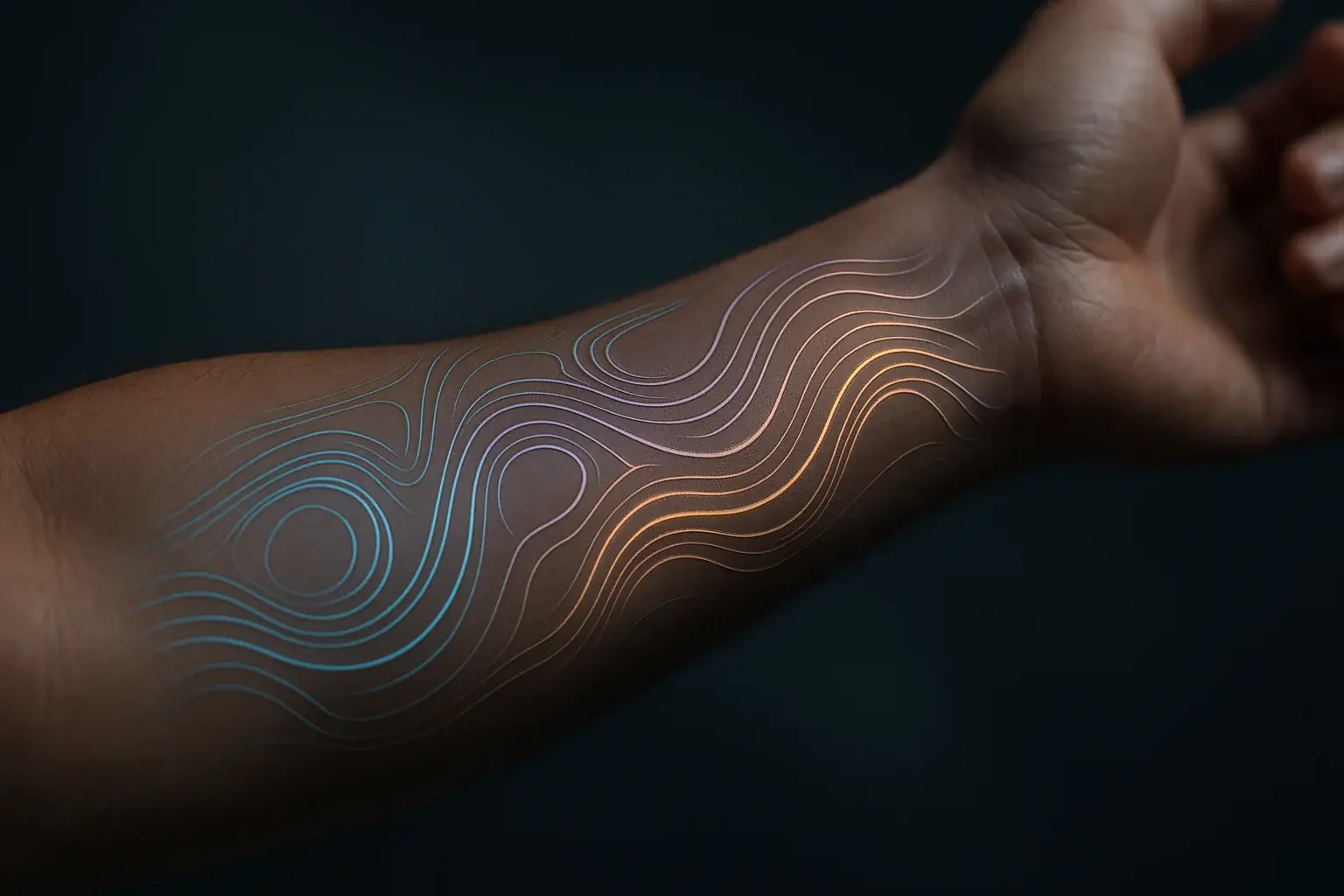
Smart tattoos fascinate many. Chaotic Moon's "Tech Tats" emerged as an early, ambitious vision in this space. It promised much. AwareInk.tech now examines this concept, separating bold claims from actual technological groundwork. A reality check is due.
Tech Tats captured imagination with its core idea: visualizing emotions directly on skin. Imagine a tattoo subtly shifting, reflecting your inner emotional state. That was the powerful promise. This fusion excited enthusiasts. The concept blended personal technology with deep self-expression, a compelling combination.
This AwareInk.tech conceptual review dissects Tech Tats' proposed mood-adaptive features. We explore its suggested technology. Our analysis probes the gap between ambitious prototype visions and practical, real-world viability. Remember: this remained a vision. We assess its conceptual underpinnings and the lessons from such pioneering, yet unrealized, projects.
How Tech Tats Aimed to 'Read' Your Vibe: The Sensing Tech Breakdown
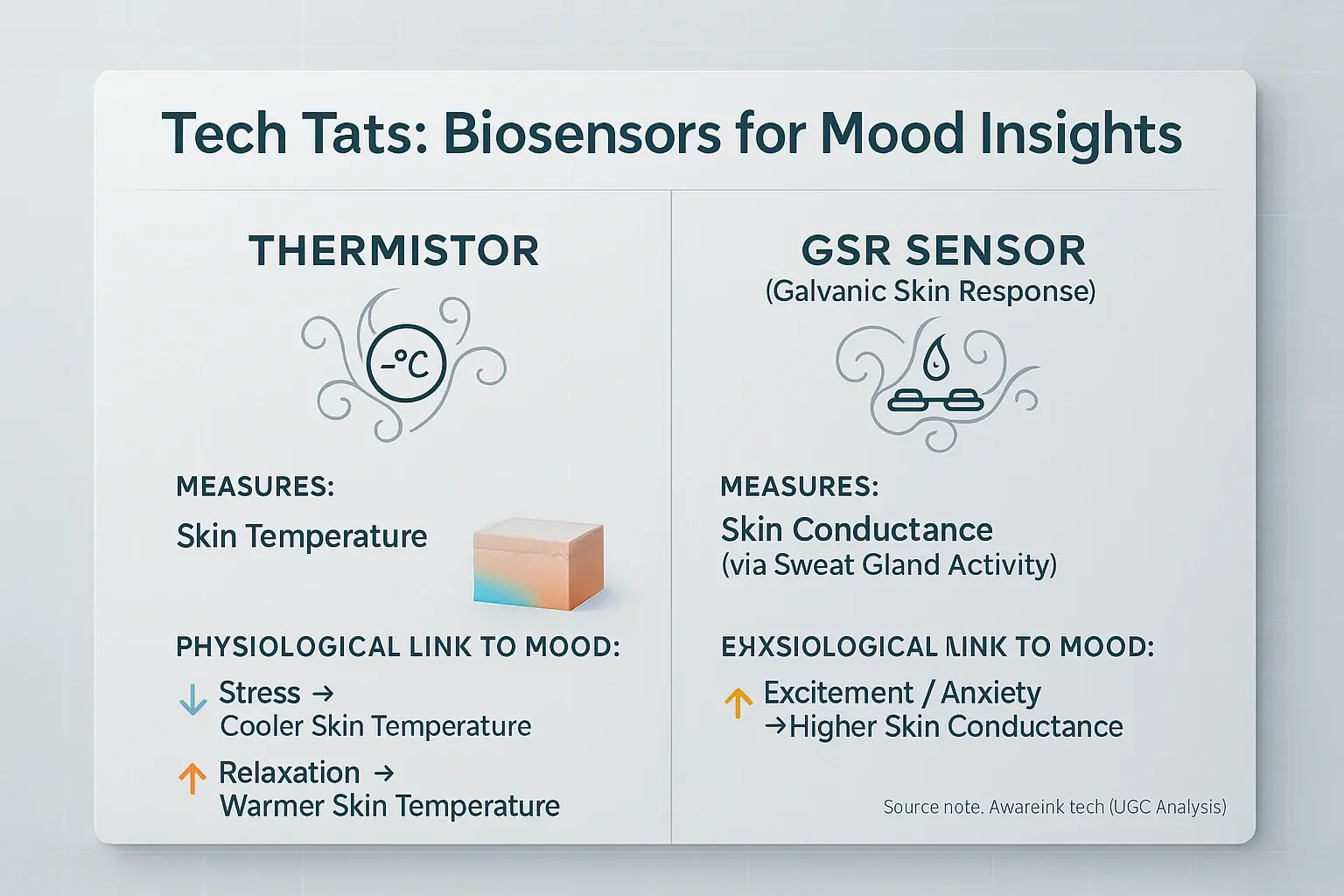
Tech Tats envisioned tiny biosensors. Smart. These sensors would sit within the temporary tattoo material. Their job? To detect subtle physiological shifts happening right on your skin's surface. Think of them like miniature body detectives, always on watch. They don't guess; they measure.
Two main sensor types were conceptually central. Thermistors were one. Thermistors track minute changes in skin temperature. A fever thermometer offers a crude comparison. Electrodes for Galvanic Skin Response (GSR) formed the other key component. GSR sensors measure tiny variations in your skin's electrical conductance, linked to sweat gland activity. More sweat often means higher conductance.
Now, the crucial link. How do these readings relate to mood? Your skin temperature can fluctuate with stress or relaxation. Think cold hands when nervous. Similarly, sweat gland activity, picked up by GSR, often spikes during excitement or anxiety. AwareInk.tech's analysis highlights a key point: these are physiological correlates of emotion. The tech measures body responses, not feelings directly. Big difference.
So, could these tats truly "read" your vibe? The concept faced hurdles. Many factors influence skin temperature and sweat. Exercise. Room temperature. Even a spicy meal. Distinguishing emotion-driven changes from these other influences is a complex task for any sensor. Interpreting the raw data accurately would remain a significant challenge for mood-adaptive smart tattoos. Context becomes everything.
Beyond Just 'Happy': Which Signals Tech Tats Focused On
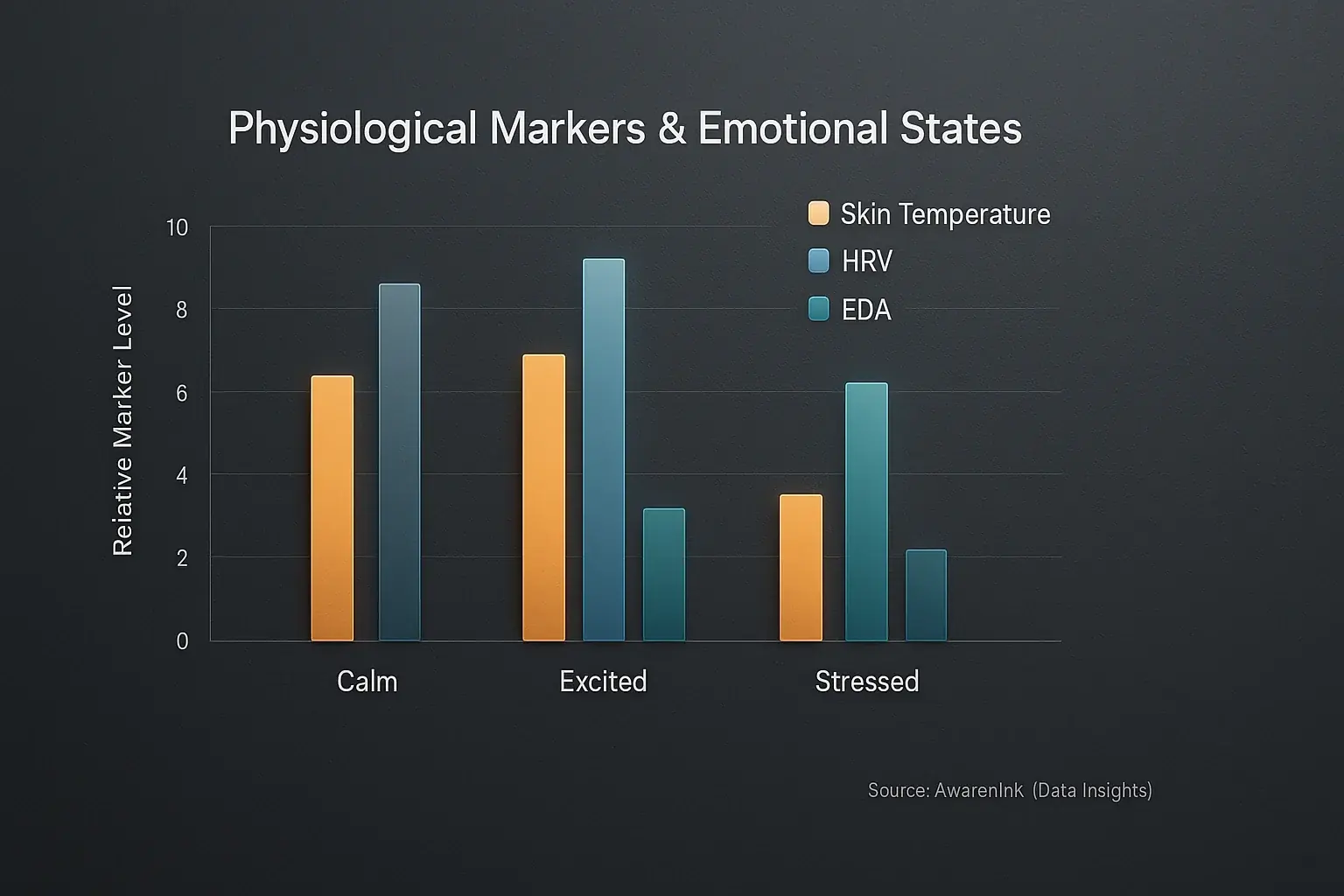
Tech Tats aimed beyond simple mood labels. They tracked specific physiological markers. These markers provide detailed bodily data. AwareInk.tech's analysis confirms this depth is essential for useful emotional understanding. This approach promised richer insights.
Key monitored signals included skin temperature. Fluctuations can suggest stress or emerging calm. Heart Rate Variability (HRV) was another primary target. HRV patterns often reflect an individual's emotional regulation capabilities. Electrodermal Activity (EDA) also offered valuable clues, measuring subtle sweat responses tied to arousal levels.
Connecting these raw signals to distinct emotions is a complex process. It is not a direct translation. The technology's goal was pattern recognition. For example, heightened physiological arousal might signify excitement, rather than only anxiety. Reduced variability could point to deep focus or, alternatively, mental fatigue, AwareInk.tech notes. This interpretation demands sophisticated algorithms.
The real challenge? Context. Physiological signals are not unique emotional fingerprints. A rapid pulse might mean joy at a surprise. It could also indicate fear during a tense moment. Tech Tats would require intelligent software to discern these differences. Users should understand this signal nuance for proper interpretation, a point AwareInk.tech's research consistently emphasizes.
The Big Promises: What Tech Tats Claimed to Do for Your Emotional Life
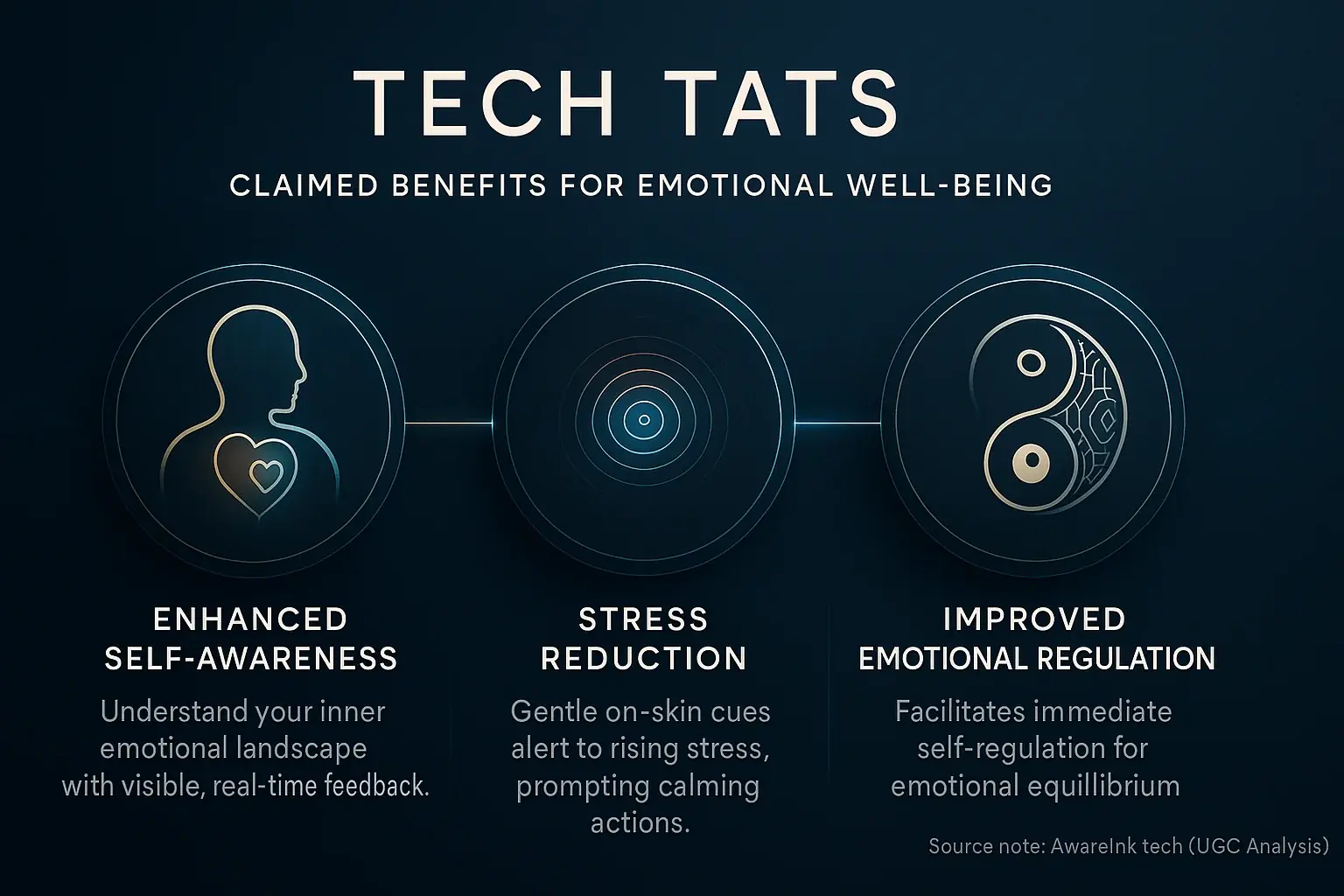
Tech Tats promised a revolution in personal emotional insight. Developers painted a future of enhanced self-awareness. Your inner emotional state could become subtly visible. This visibility aimed to help individuals understand themselves profoundly. The core claim centered on improved emotional well-being.
Specific claimed applications targeted daily life stressors. Stress management was a primary advertised benefit. Imagine a gentle visual cue. It appears on your skin. Your stress levels are rising. This prompt aimed to encourage immediate emotional regulation. Tech Tats also promised to aid mindfulness practices.
The vision extended beyond individual awareness. Dynamic self-expression was a key component. Users might communicate moods directly through their skin. This technology could foster deeper personal understanding. Some proponents even suggested new forms of empathetic connection. A bold concept.
Herein lies the critical caveat. Realizing these benefits hinges entirely on the technology's performance. Its accuracy is non-negotiable. User engagement is equally vital. AwareInk.tech's analysis of early tech concepts often reveals a gap. Hype frequently outpaces practical, reliable utility. This pattern is familiar. Achieving these ambitious emotional enhancements presents significant, practical challenges for users.
From Concept to Reality? Tech Tats' Journey and Collaborations
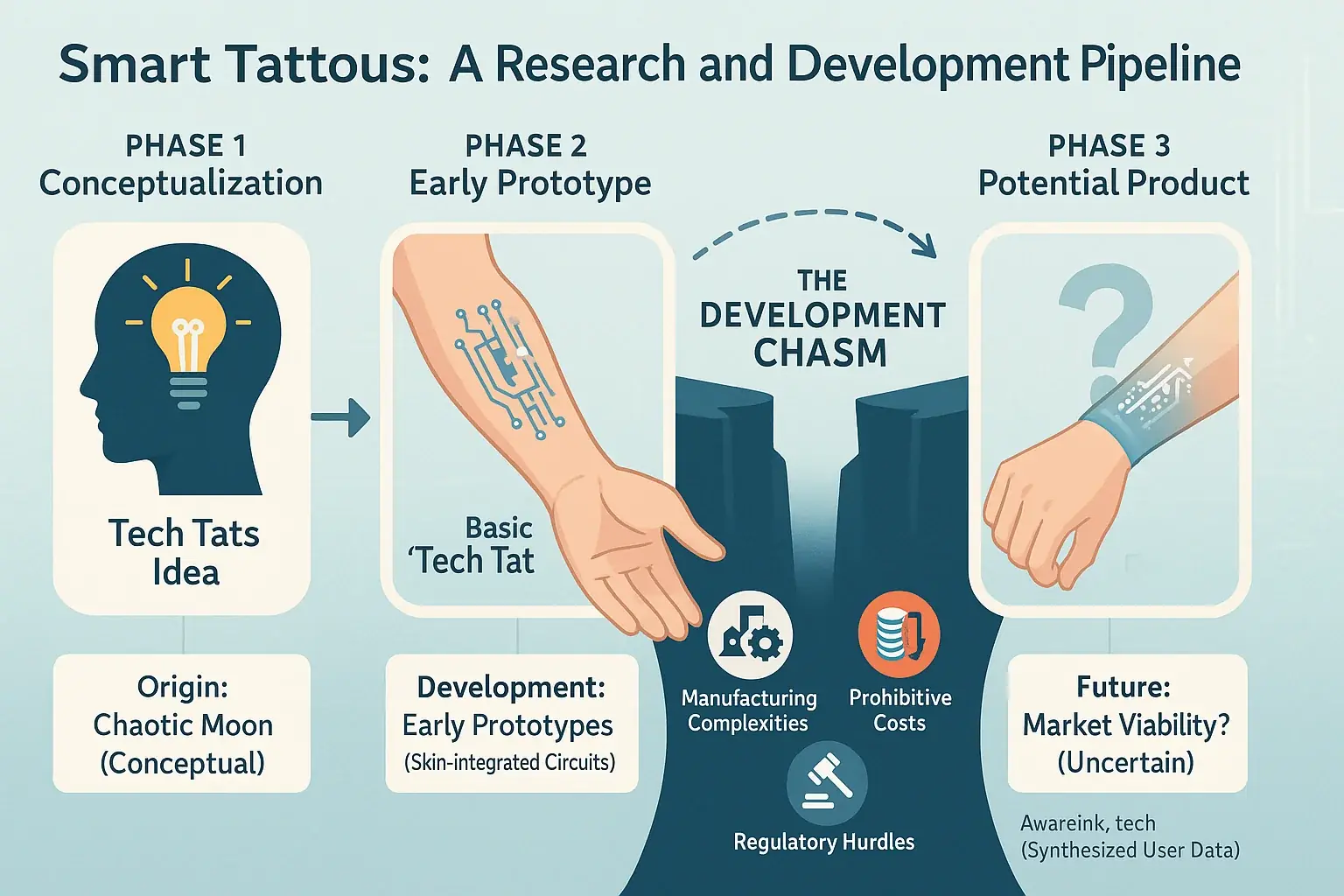
Chaotic Moon, an innovation firm, first conceived Tech Tats. This project was fundamentally conceptual. It served as a vivid proof of concept. Tech Tats were not a product approaching market readiness. AwareInk's investigation confirms this early, exploratory nature of the initiative.
The firm showcased impressive early prototypes. These demonstrations highlighted the exciting potential of skin-integrated circuits. Fascinating stuff. However, scaling such bio-integrated technology presents immense practical hurdles. Many technology pioneers confront this exact scale-up challenge.
Explorations of early-stage technology often involve conceptual partnerships. These collaborations typically aim to assess technical feasibility and explore potential applications. AwareInk's research finds no public confirmation of specific, high-profile corporate partners in Tech Tats' deeper development. Such alliances in advanced tech frequently focus on pure research. They seldom guarantee a mass-market device.
Now, for an important reality check. A vast chasm separates compelling prototypes from commercially viable, safe products. Many brilliant concepts, unfortunately, never exit the research lab. Manufacturing complexities frequently halt progress. Development costs can quickly become prohibitive. Regulatory approvals for skin-contact electronics also introduce significant, often lengthy, delays. AwareInk's analysis of tech innovation cycles reveals this pattern consistently.
Tech Tats vs. The Rest: How It Stood Against Other Smart Tattoo Ideas
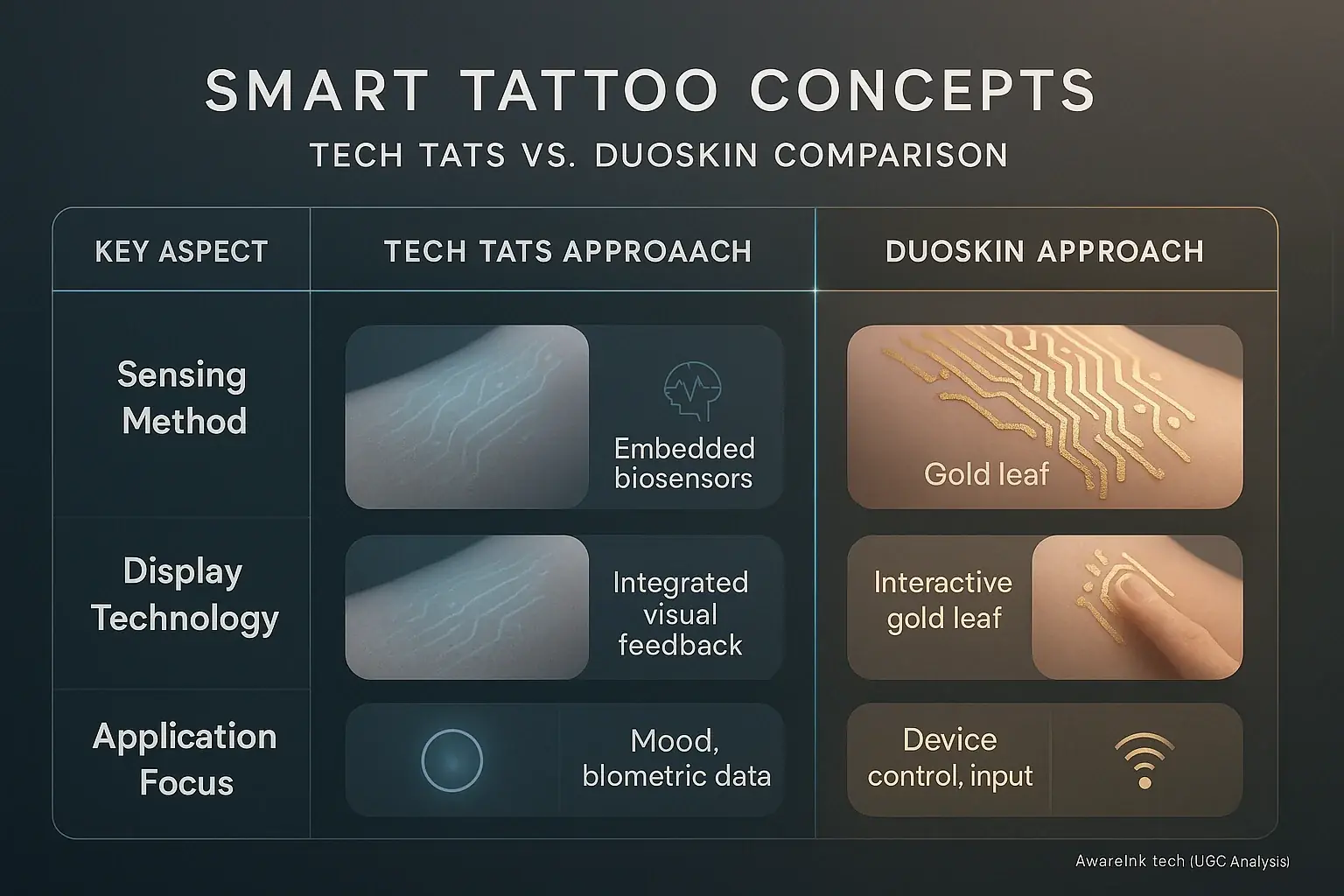
| Key Aspect | Tech Tats Approach | DuoSkin Approach |
|---|---|---|
| Sensing Method | Embedded biosensors | Gold leaf circuits |
| Display Technology | Integrated visual feedback | Interactive gold leaf |
| Application Focus | Mood, biometric data | Device control, input |
This comparison highlights different core ideas. Early smart tattoo concepts took separate paths. Tech Tats focused inward. DuoSkin looked outward. Both envisioned on-skin interfaces. Yet, their foundational technologies were vastly different. These technical choices heavily influenced their proposed applications and practical feasibility. AwareInk.tech’s analysis of early concepts reveals these distinct design philosophies. Understanding these early divergences is key to appreciating the field's progression.
The Legacy of Tech Tats: What We Learned from a Bold Vision
Tech Tats represented a bold early vision. This vision imagined mood-adaptive smart tattoos with remarkable foresight. The project remained conceptual. Its promise for personal emotional insight, however, was significant. A true pioneer.
Tech Tats' exploration showed immense potential for on-skin emotional sensing. This was a powerful idea. AwareInk.tech's analysis reveals it also highlighted monumental challenges in practical application. Miniaturization, sustainable power sources, and consistent real-world data accuracy presented huge hurdles for widespread adoption. These hard-learned lessons inform development today.
The Tech Tats journey influences current smart tattoo research profoundly. Its conceptual groundwork, even unreleased, paved pathways for others. Future innovations will undoubtedly build upon these early explorations, aiming to overcome past technological limits. AwareInk.tech notes that enduring questions about user interface design and personal data privacy still resonate from this initial concept. Innovation learns.
AwareInk.tech critically evaluates all emerging mood-adaptive technologies. We balance innovation with practical realities. User well-being, practical viability, and deep ethical considerations always guide our analysis of new tattoo concepts. Our systematic review of concepts like Tech Tats prepares us to dissect future breakthroughs. Your informed understanding remains our priority.

